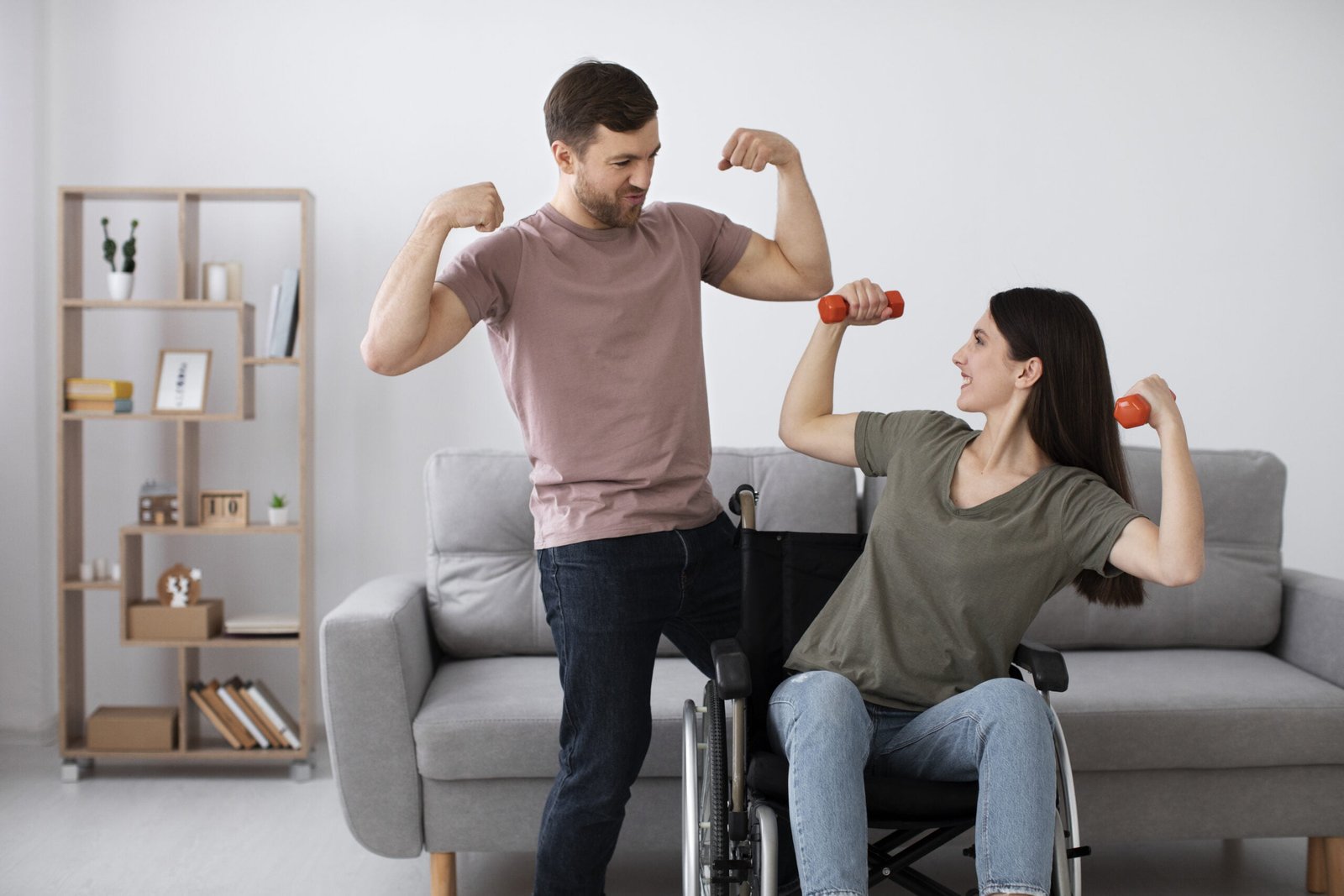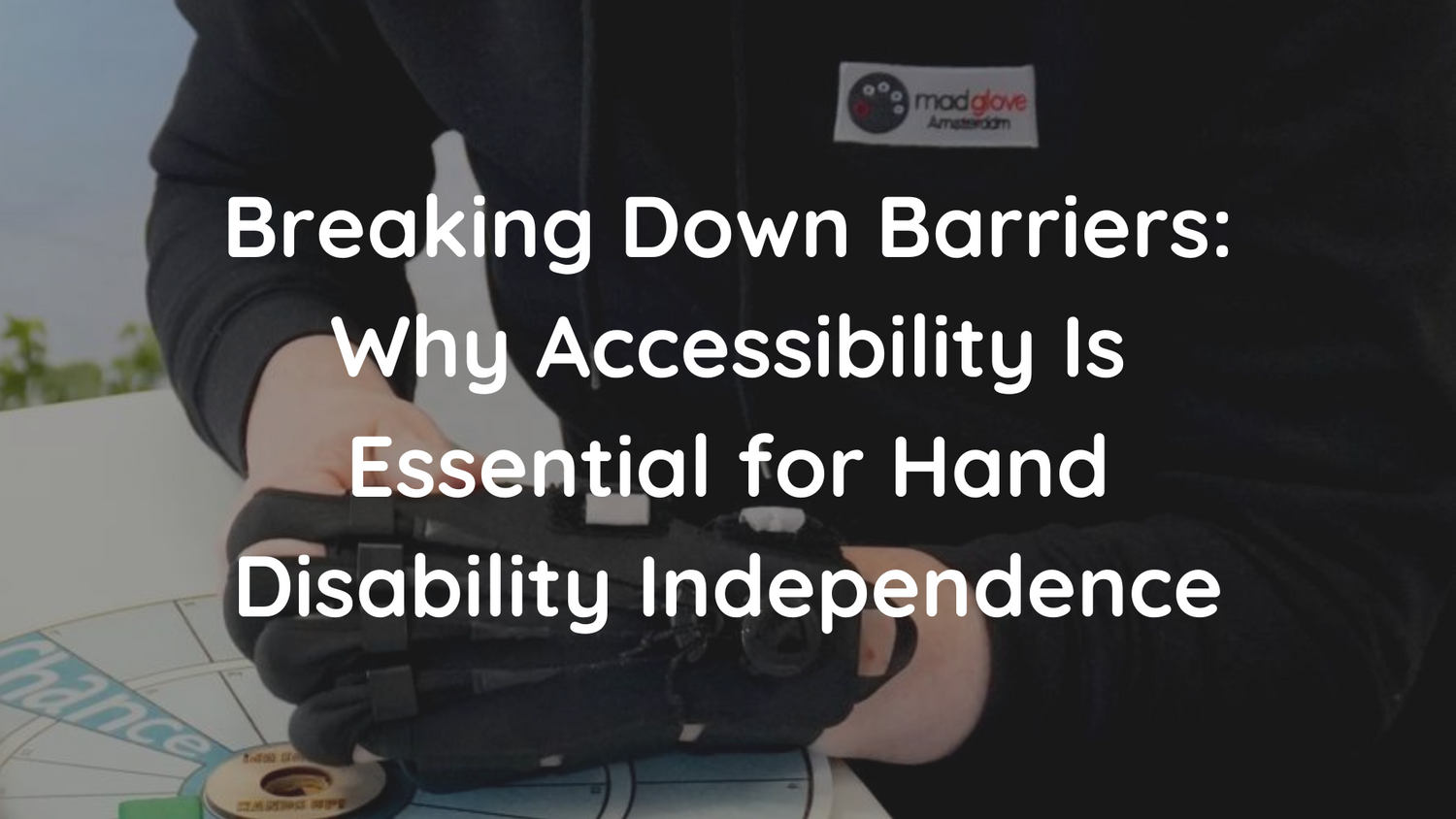Scientific Importance of Staying Active
Spasticity, a condition characterized by stiffness and involuntary muscle contractions, can significantly impact hand mobility. For more detailed information on spasticity, you can refer to one of our previous pieces, written by Cara. And while you scroll, why not give the rest of them a read. I promise you won’t regret it! :)
Despite challenges, engaging in regular physical activity is crucial for several reasons. Everyone knows that physical activity helps improve blood circulation, reduces muscle stiffness, and promotes joint flexibility. For individuals with hand disabilities, incorporating specific exercises targeting the affected muscles can lead to enhanced motor function and improved range of motion.
Additionally, staying active has proven cognitive benefits. Research indicates that regular physical activity can positively influence brain function, potentially contributing to improved motor skills and cognitive function, even in individuals with disabilities. The brain has a remarkable ability to adapt and rewire, and consistent engagement of the disabled hand can stimulate these neural pathways, fostering rehabilitation.
I can provide you with general information, but please note that specific references may require access to scientific databases or journals. Always consider consulting with healthcare professionals for personalized advice. Here's a general overview of the scientific importance of staying active:
1. **Physical Activity and Spasticity:**
- Ada, L., Goddard, E., McCully, J., Stavrinos, T., & Bampton, J. (2010). Thirty minutes of positioning reduces the development of shoulder external rotation contracture after stroke: a randomized controlled trial. Archives of Physical Medicine and Rehabilitation, 91(9), 1279-1284.
2. **Neuroplasticity and Exercise:**
- Kleim, J. A., & Jones, T. A. (2008). Principles of experience-dependent neural plasticity: implications for rehabilitation after brain damage. Journal of Speech, Language, and Hearing Research, 51(1), S225-S239.
3. **Cognitive Benefits of Physical Activity:**
- Hillman, C. H., Erickson, K. I., & Kramer, A. F. (2008). Be smart, exercise your heart: exercise effects on brain and cognition. Nature Reviews Neuroscience, 9(1), 58-65.
4. **Hand Exercises for Rehabilitation:**
- Page, S. J., & Levine, P. (2007). Modified constraint-induced therapy combined with mental practice: thinking through better motor outcomes. Stroke, 38(3), 824-829.
Please use these references as a starting point, and for more comprehensive information, consult academic databases or seek guidance from healthcare professionals.
Tips and Tricks for Daily Life
Adaptive Equipment
- Invest in adaptive tools and gadgets designed to facilitate daily tasks. There are various assistive devices available, such as adaptive utensils, ergonomic keyboards, and specialized grips, which can significantly improve hand functionality. What we’ve learned during our market research is that there is a huge lack of awareness for such tools, so it’s always good to ask your medical professionals, and search in the community for new solutions that are coming up.
Occupational Therapy
- Consider working with an occupational therapist who can provide personalized strategies to enhance hand function. Occupational therapists are trained to identify individual challenges and tailor exercises and activities to address specific needs. In the meantime, you can also reach out to us. We've been working on an activity booklet, made in collaboration with rehabilitation specialists, that can be used as inspiration for daily life activities that are engaging, stimulating, and even motivating.
Incorporate Hand Exercises
- Include regular hand exercises in your routine. Simple activities like squeezing a stress ball, playing with therapeutic putty, or using finger exercises can contribute to increased hand strength and flexibility. It’s never too late to get more active!
In summary, there’s many benefits to staying active: from improved physical health, to enhanced mental well being, we cannot stress how important it is to keep moving. Additionally, participating in adaptive sports or group activities fosters social connections, providing a supportive community where individuals can share experiences and inspire each other.
If you’re looking for some inspiration, follow individuals who showcase their talents despite disabilities, such as adaptive musicians, artists, or athletes. These influencers often share their journeys, providing inspiration and practical tips for overcoming challenges. Here are some of our favorites on Instagram:
@woods_clara_ @dan_hemihelp @petite.tortue.alatete.decochon @_katastoke_ @freedom20190812 @ty.hawkins2.0 @aphasiadennis
Online platforms also feature occupational therapists and rehabilitation specialists who share valuable insights, exercises, and success stories related to disabilities. We recommend checking out:
@neuromove_amsterdam @readeamsterdam @helioheros @tke_bremen @merem.nl
Conclusion
In the face of disabilities, individuals have the power to redefine their capabilities and lead fulfilling lives. Staying active not only contributes to physical rehabilitation but also positively impacts mental and emotional well-being. The online community is rich with influencers who show resilience and perseverance, serving as inspiration for those navigating similar challenges. By embracing adaptive strategies, seeking support, and consistently engaging the disabled hand, individuals can empower themselves to break through barriers and discover the boundless possibilities that await them. Remember, the journey may be challenging, but every step forward is an achievement- helping you unlock your full potential.





